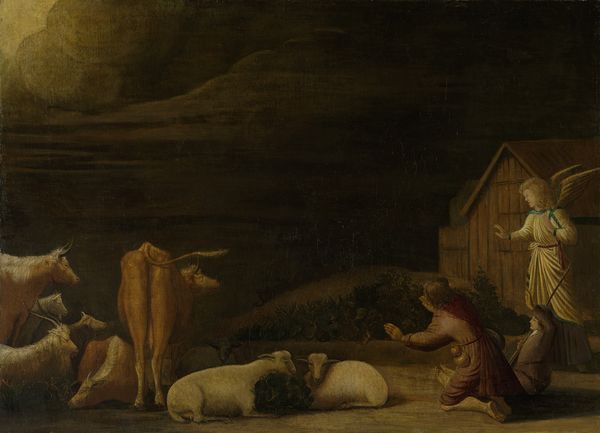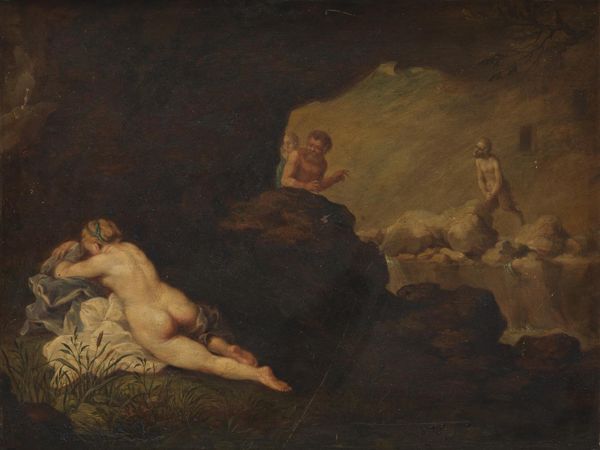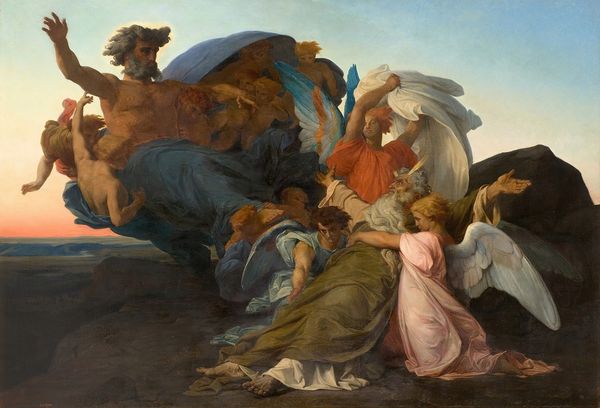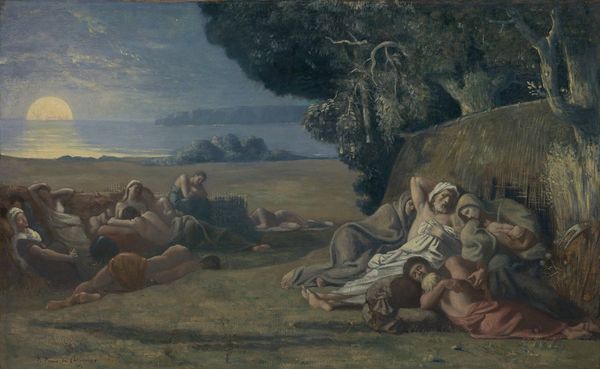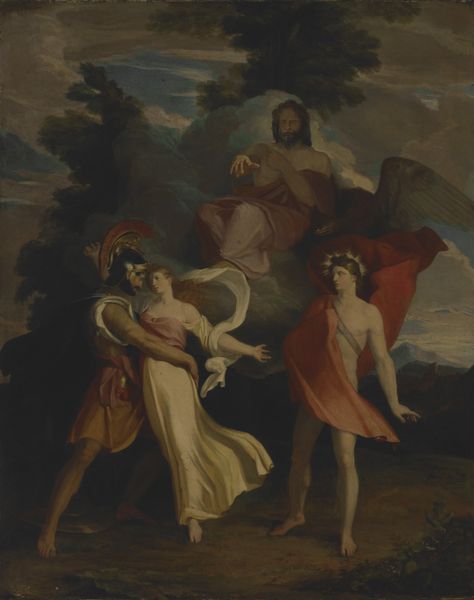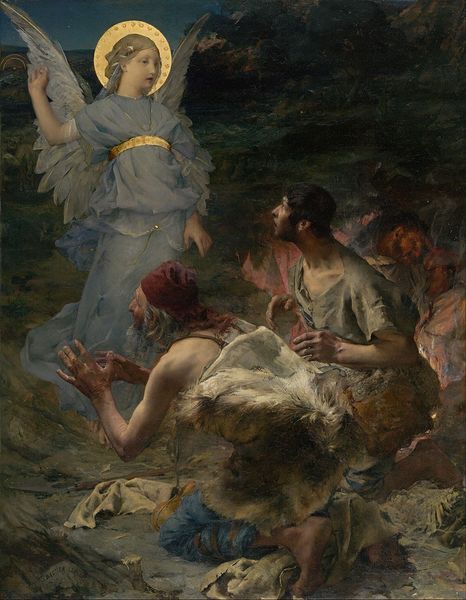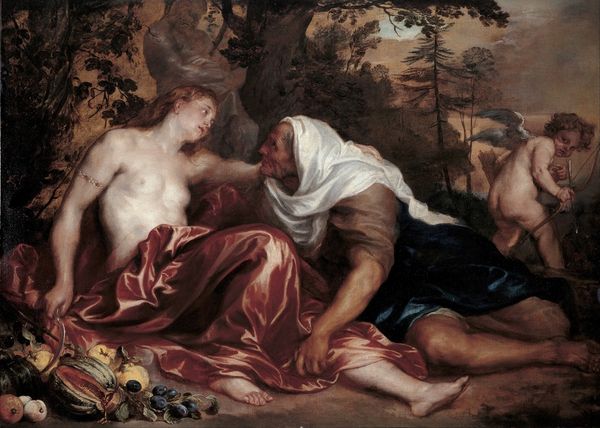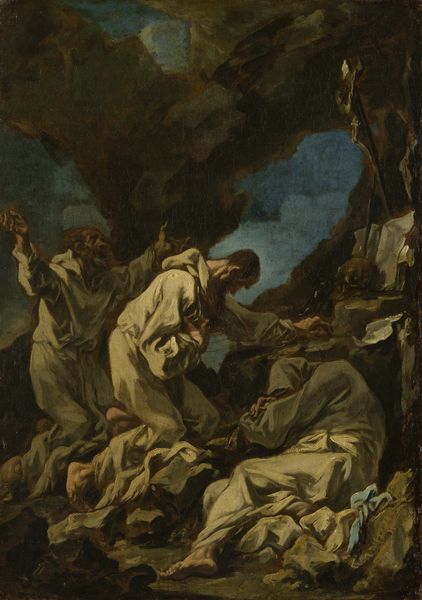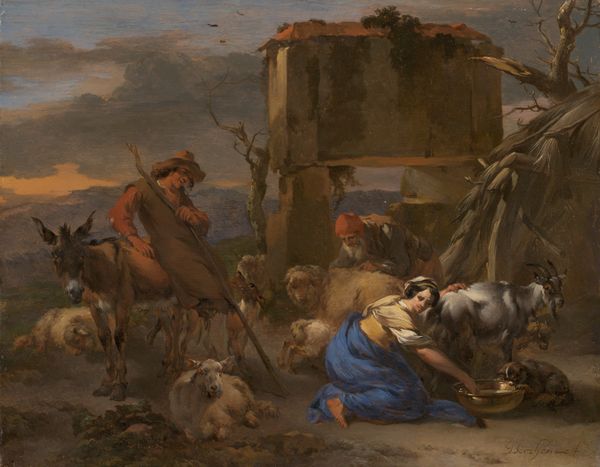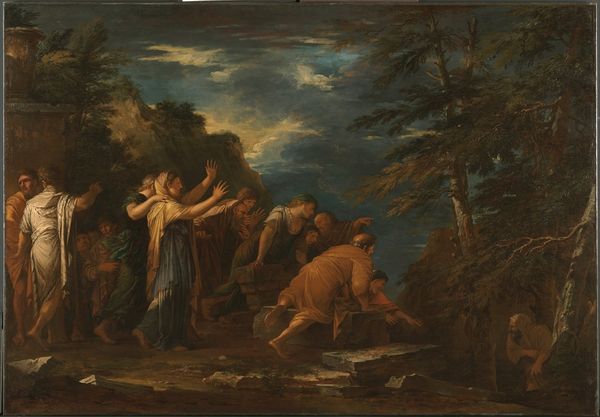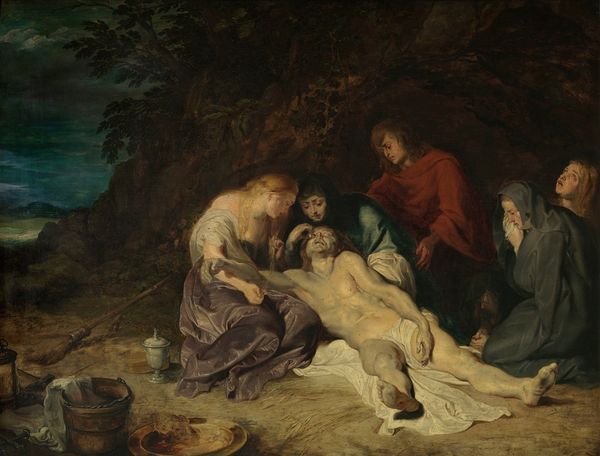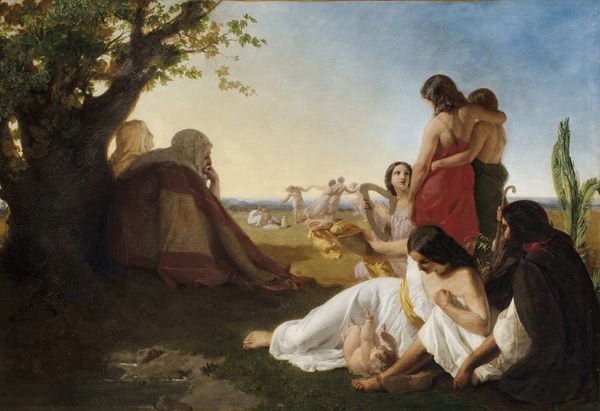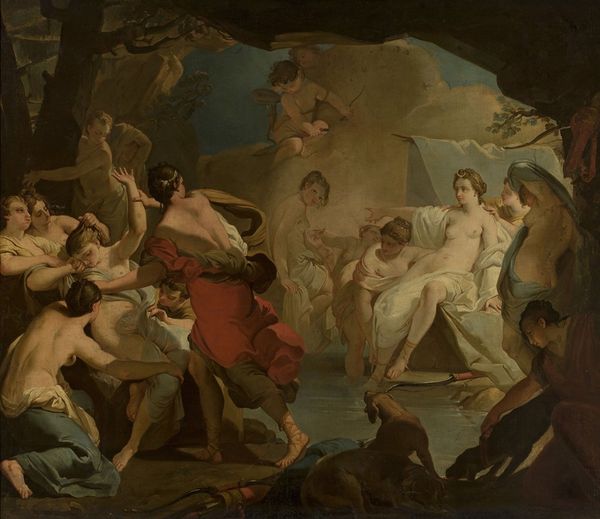
oil-paint
#
narrative-art
#
oil-paint
#
landscape
#
figuration
#
oil painting
#
romanticism
#
history-painting
Dimensions: 150 cm (height) x 199 cm (width) (Netto)
Curator: Ah, Ditlev Blunck's "The Vision of the Prophet Ezekiel," painted in 1830. It’s currently held here at the SMK, made with oil paint. Quite the dramatic history painting, wouldn't you say? Editor: It strikes me immediately with its dark and brooding quality. The figures are languid, almost melting into the landscape, which feels both sheltering and a little oppressive. Is that supposed to be the Almighty floating above? It looks terribly uncomfortable for everyone. Curator: Yes, that’s meant to be the divine vision. Blunck aimed to capture that precise moment of religious ecstasy described in the Book of Ezekiel. Editor: Ecstasy. It’s more like an exhausted Sunday afternoon. I am interested in how the light is captured on this piece. What do we know about Blunck's choice of oil and layering process here, and the material practices of academic art at the time? What are we meant to make of the almost academic use of a very specific type of fabric around some figures? Curator: Materially speaking, Blunck trained in the Danish Royal Academy, and you see that influence clearly. He’s playing with dramatic contrasts—light and shadow—with a strong attention to form. Remember, he would have likely grounded his pigments by hand. In this historical and religious genre the depiction of rich garments signals social stature. This would indicate those within Ezekiel's vision as important in a cultural-historical context. I wonder though... Editor: Wonder what? Curator: Whether those rich materials make sense in that landscape, in the hands of that populace? Aren't they quite overwrought and disconnected to the place of rest in which they find themselves? Editor: Right. They are signifiers of another order, literally dropped in and yet they tell a clear class narrative if one begins with a specific gaze. Curator: Perhaps Blunck wanted to remind us that even in divine visions, the earthly distinctions remain? After all, visions have social contexts as well. Editor: Or how material processes and their representation cannot escape existing political realities of art practice and social codes, ha! Even prophets aren’t exempt from the class struggles embedded in the materials themselves. Anyway, what a way to reflect on historical painting, hey? Curator: Absolutely. It offers layers upon layers of things to consider.
Comments
No comments
Be the first to comment and join the conversation on the ultimate creative platform.
